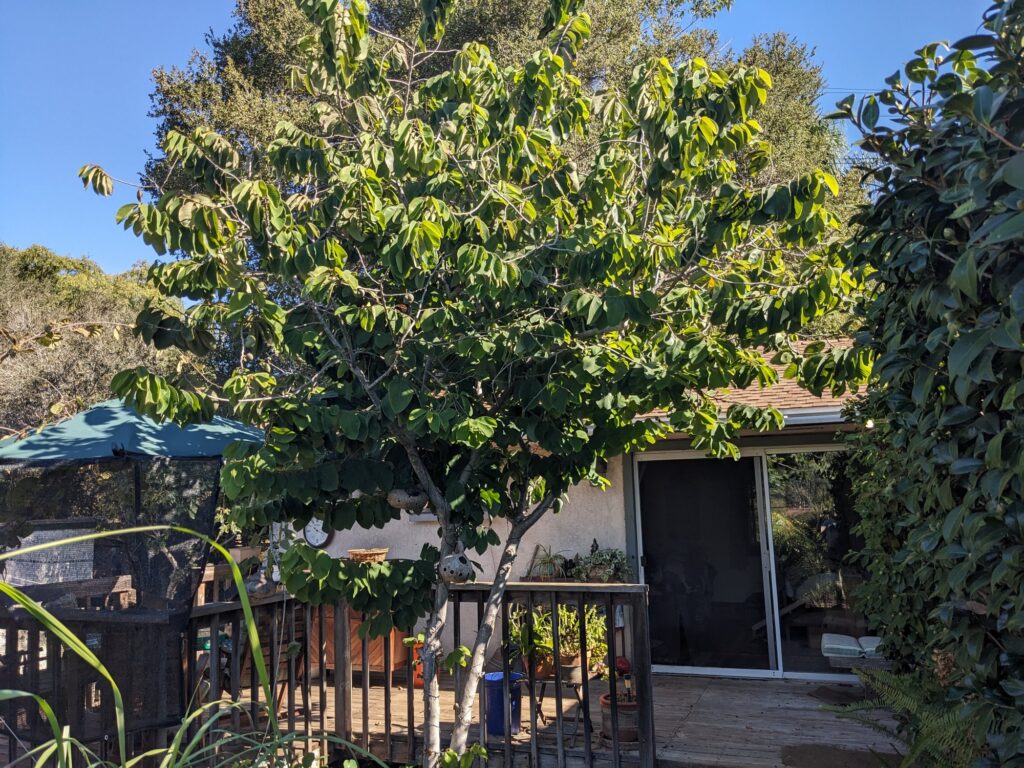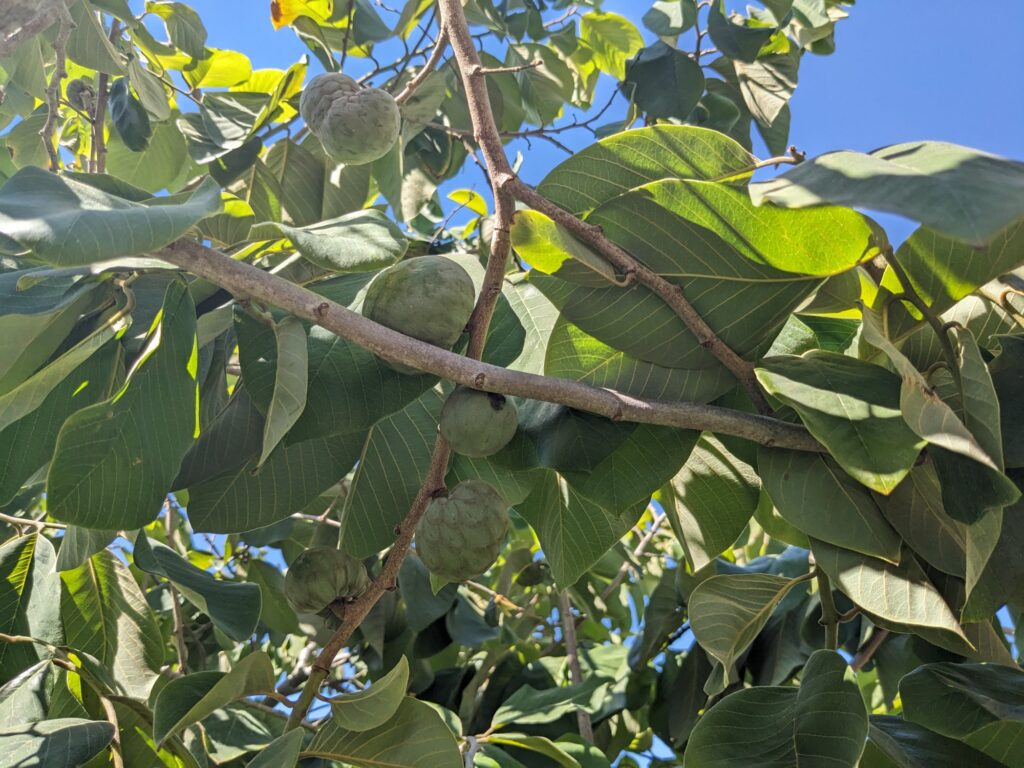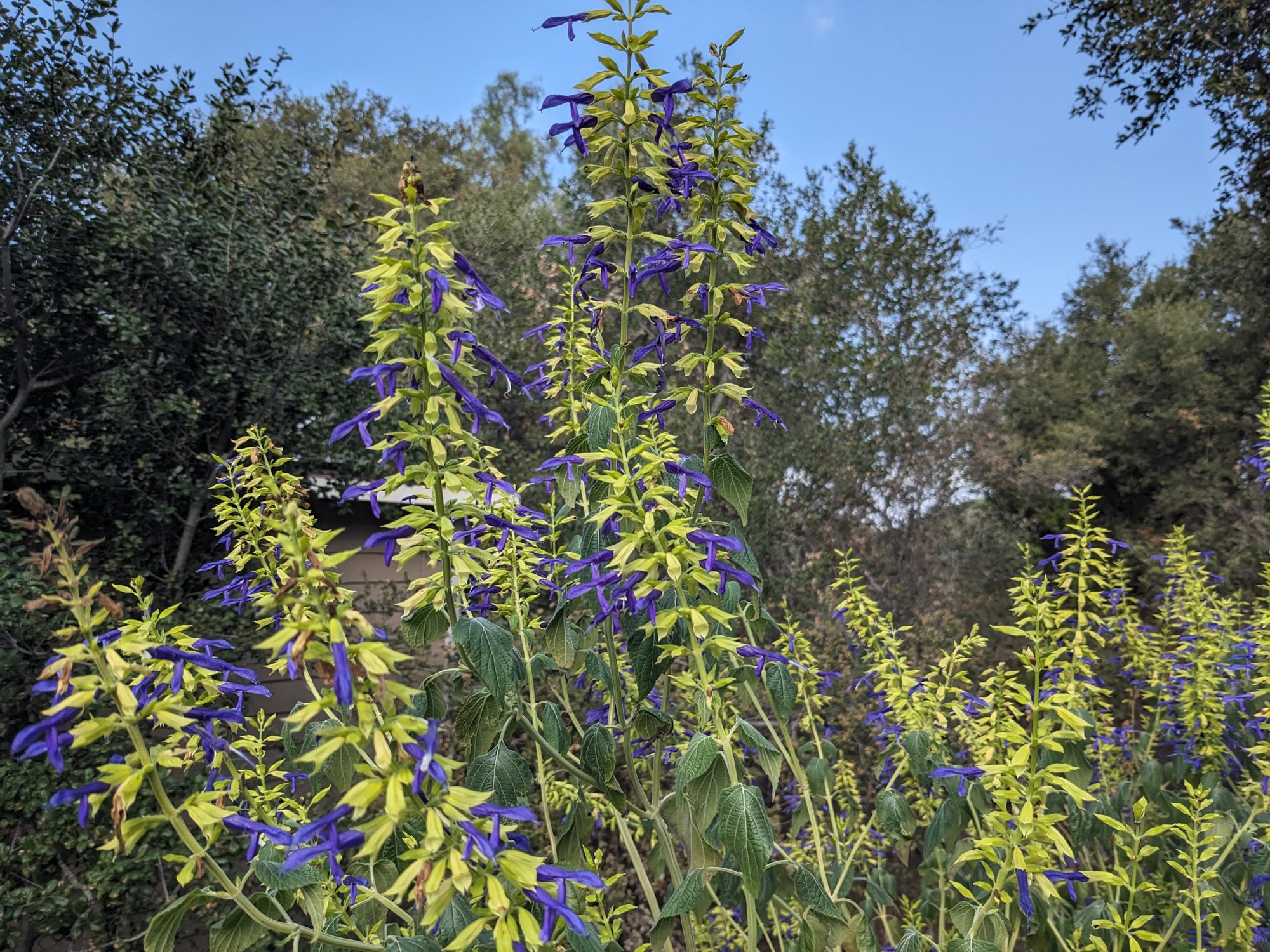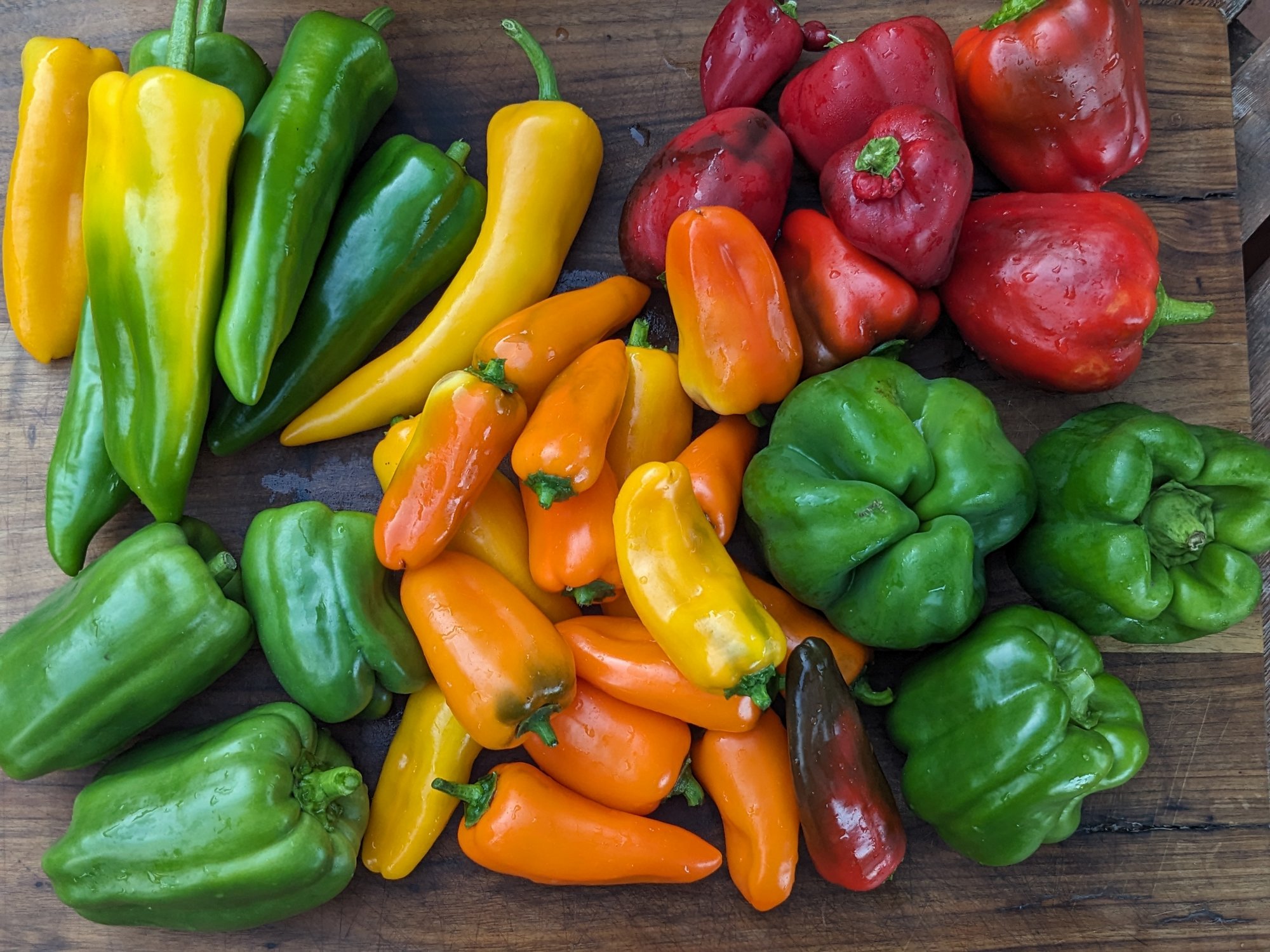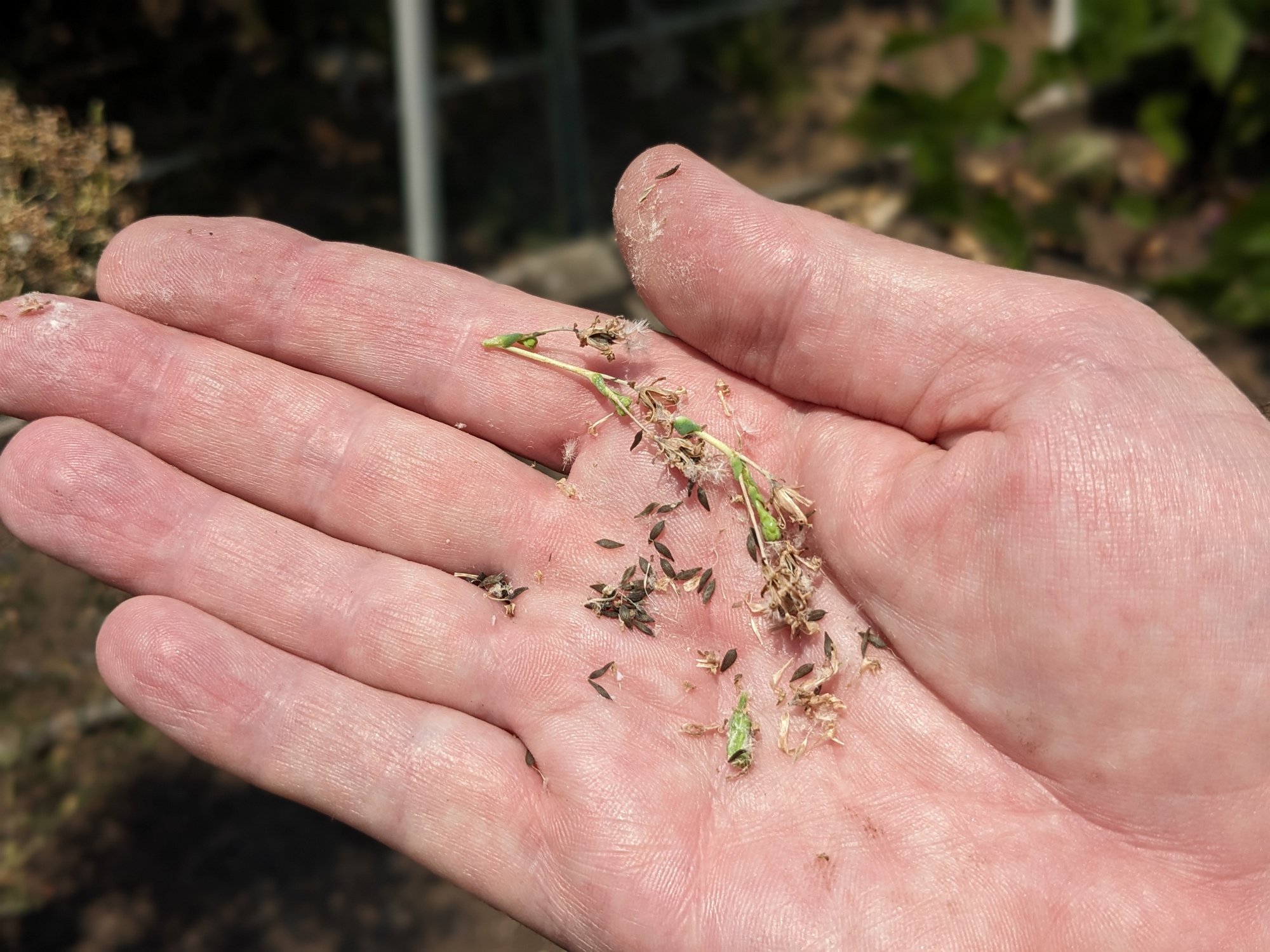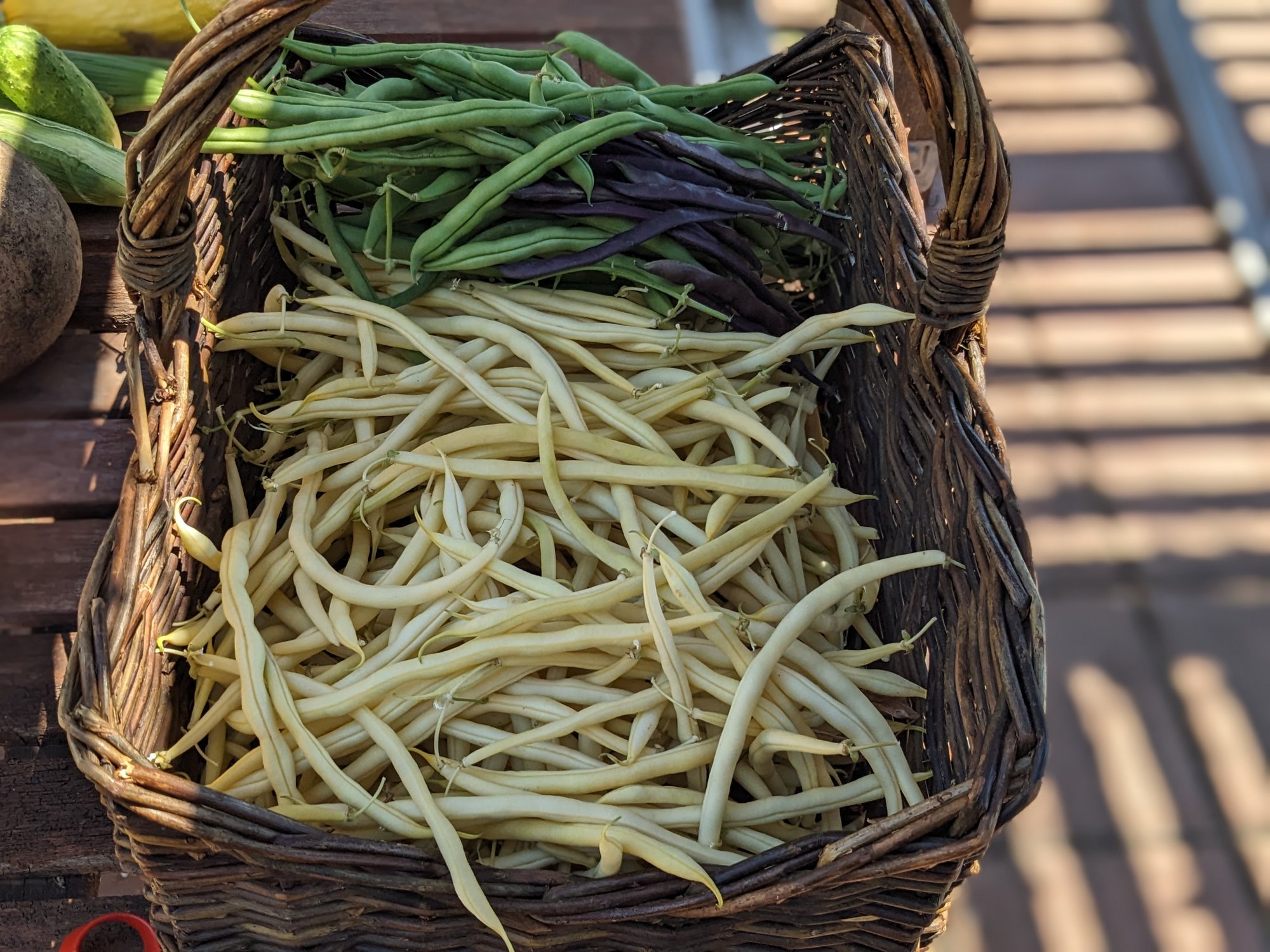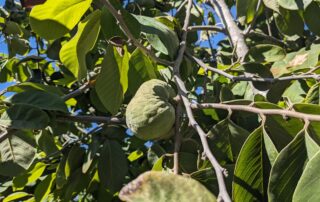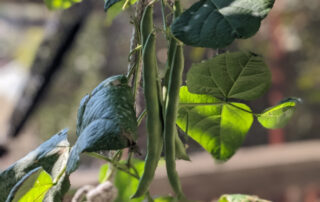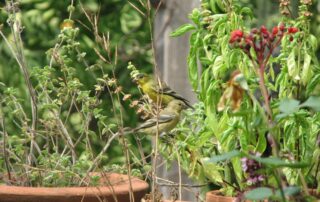Growing Cherimoya Trees & Fruit
Quick Links
The Cherimoya (Annona cherimola) is a fast-growing subtropical tree native to the lower elevations of the Andes in South America, but now widely naturalized in Central and southern North America.
It produces hard, green, slightly flattened fruit about the size of a baseball that ripen in early-to-mid winter. The interior of the fruit is a sweet, white semi-soft flesh dotted with large black seeds. The flesh sort of tastes like custard, which is why the fruit is sometimes called a “custard apple.” The seeds, however, are poisonous if crushed, so you don’t want to eat those.
Growth Habit
I started my Cherimoya from seed, a little over 15 years ago. It’s now about 20 feet high with a 15-foot spread. In the wild, they can reach 30 feet or more.
A multi-trunked tree, the branches grow out of it in all directions with large oval leaves from both sides of the branch. The leaves are fuzzy on the top and smooth underneath. As the branch matures, it drops the leaves closest to the trunk and new branches will sprout from the former leaf nodes if you let them.
The cherimoya’s growth habit is dense enough that it could be pruned like a shrub, but I prefer to keep mine limbed up so it provides shade for our raised deck and I can grow other plants underneath. It is deciduous, but curiously drops its leaves in the spring rather than the fall.
Here in the United States, the Cherimoya grows best in USDA zone 10 and up, but it does well enough here in zone 9 with protection from the occasional freeze, which our house provides.
Its optimal growing temperature is 60° – 80°, though it seems to do just fine in our summers which can reach into the 90s and low 100s. I’ve read that it requires a certain number of chill hours below 45° to flower and fruit, but I don’t know how many. I just know that we average around 100 hours below that temp in the winter, and my tree has never had a problem flowering.
Flower & Fruit
As for the cherimoya’s flowers, they appear in mid-to-late spring after the plant has gone through its brief deciduous phase and new leaves growing. The flowers themselves are fleshy, green, and unremarkable. They grow along the branch and look a lot like young leaves, so they are really easy to miss.
Honey bees are too large to get into the flowers so bees aren’t a good pollinator for the cherimoya. Botanists believe that small beetles are the pollinators in their native habitat. Here in Southern California the pollinators are more likely small moths, fruit flies, or just the wind. Because pollination is hit or miss here in North America, commercial growers generally keep the trees small and close together making them easier to pollinate by wind or by hand.
Harvesting & Eating
The fruit of the Cherimoya takes around 6 months to ripen, typically in early winter. Cherimoya are a little tricky to tell when they’re ripe because they remain green and hard even when they’re ready to pick. The easiest way to tell is when the fruit reaches about the size of a baseball and just starts to get a bit of brown spots or streaks. If you pick them too early and they’re really hard, you can help them ripen off the tree by placing them in a brown bags with a banana until they’re just a bit soft. Once they’re ripe, they should be stored in the refrigerator. Fruit off the tree will quickly turn brown and mushy otherwise.
As for eating, you simply slice the fruit in half and scoop out the creamy white flesh, removing the seeds. The texture is a lot like ripe papaya, firm, but smooth. A lot of people say the flavor is like pineapple and banana, but I find it to be more “tropical” like pineapple and guava with some strawberry flavor.
You can eat it straight from the fruit or mix it into yogurt or ice cream. It’s also a great addition to fruit smoothies. Nutritionally speaking, cherimoya is a good source of vitamin C, vitamin B6, riboflavin, and potassium.
Conclusion
The cherimoya is an easy-to-grow sub-tropical tree that’s an interesting addition to the garden. Great for USDA zones 9B and up, it’s fast-growing, has few pests (if any), and is easy to trim into any size or shape you like. The fruit is an interesting combination of tropical pineapple, guava, papaya, and strawberry flavors, and the soft texture makes it a good choice for eating by itself, blending into yogurt, or a fruit smoothie.
Cherimoya Details
| Plant Details | |
|---|---|
| Common Name | Cherimoya, Custard Apple |
| Botanical Name | Annona cherimola |
| Plant Family | Annonaceae |
| Native to | South America |
| Plant Type | Tree |
| Mature Size | 15-30 ft. tall |
| Sun Exposure | Full to Partial |
| Soil Type | Any (prefers) |
| Soil pH | Any (prefers slightly acidic) |
| Water | Moderate |
| Bloom Time | Spring |
| Flower Color | Green |
| Hardiness | Zones 9-11 (USDA) |
You Might Also Like These
About the Author
[aioseo_eeat_author_bio]


